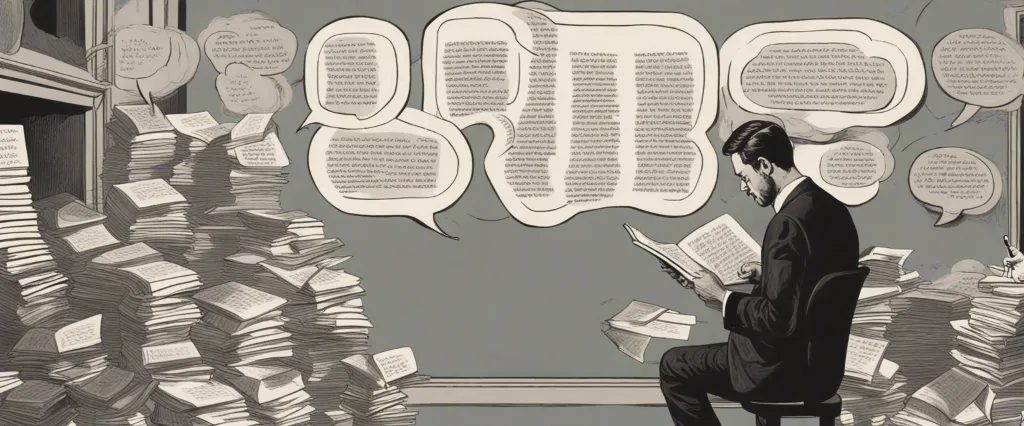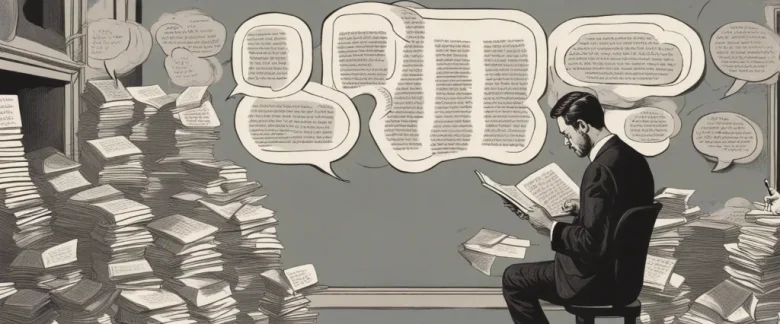
In “How The Mighty Fall,” James C. Collins delves into an insightful exploration of why some of the most successful companies of the past have ultimately faltered and even collapsed. Through extensive research and analysis, Collins presents a framework that identifies the five stages of decline that organizations often experience. By examining the warning signs and remedies for each stage, the book provides invaluable lessons on how leaders can prevent their own downfall. James C. Collins, renowned author, educator, and consultant, is best known for his best-selling book “Good to Great.” Recognized as a leading authority on organizational performance and sustainable success, Collins has helped numerous companies achieve greatness through his profound insights and practical strategies.
Chapter 1: Hubris Born of Success
In Chapter 1 of “How The Mighty Fall” by James C. Collins, titled “Hubris Born of Success,” the author explores the first stage of decline that successful companies often experience. Collins introduces the concept of “the five stages of decline” as a framework to understand the downfall of once-mighty organizations.
The chapter begins by highlighting the surprising observation that companies’ destructive path generally begins during times of great success. Through detailed research, Collins identifies a common pattern in companies that result in decline. The initial stage, hubris, arises when companies become overly confident, arrogant, and excessively self-assured due to their past achievements. The sense of superiority often leads to a feeling of invulnerability, causing leaders to take unnecessary risks and neglecting the qualities that contributed to their success.
Hubris is characterized by several warning signs, including neglecting core values and principles, feeling omnipotent, losing a sense of discipline, and becoming immune to criticism. Collins provides examples of companies that fell into the trap of hubris, such as Circuit City, which believed their dominance was unchallenged and failed to adapt to a changing market, ultimately leading to their demise.
In this chapter, Collins emphasizes the importance for leaders to remain humble, continuously learning and adapting to new circumstances, even during times of great success. He warns that embracing hubris without the ability to confront the brutal facts can be the beginning of a company’s downfall.
Overall, in Chapter 1 of “How The Mighty Fall,” Collins highlights the danger of hubris that arises from success and emphasizes the importance of remaining humble to prevent the gradual decline of once-thriving organizations.
Chapter 2: Undisciplined Pursuit of More
Chapter 2 of “How The Mighty Fall” by James C. Collins delves into the first stage of decline for organizations: the undisciplined pursuit of more. Collins highlights that many once-great companies often begin their decline by falling into the trap of excessive expansion and reckless ambition.
Collins emphasizes the danger of undisciplined growth, where organizations lose focus on their core values and start chasing opportunities that may not align with their true strengths. He argues that organizations become vulnerable when they cannot resist the allure of expanding into new markets, launching multiple new initiatives, or engaging in extravagant acquisitions without thoroughly evaluating their compatibility with the company’s core purpose and competencies.
The author identifies three culprits behind the undisciplined pursuit of more: “The Doom Loop,” “The Sudden Fall,” and “The Tipping Point.” The Doom Loop refers to the cycle of success breeding complacency, which ultimately leads to failure. Organizations that experience prolonged success often become overconfident, assuming that their past achievements alone guarantee future success. This dangerous mindset prevents them from adapting to changing circumstances and staying disciplined in their pursuit of quality and innovation.
Then comes The Sudden Fall, where a significant disruption or crisis shakes the organization, often exposing its vulnerabilities and lack of resilience. Finally, The Tipping Point represents the moment when all the undisciplined choices and excessive actions accumulate, leading to an irrecoverable collapse. At this stage, the organization’s decline becomes unstoppable and fatal.
Collins stresses the importance of maintaining discipline throughout an organization’s growth and expansion. Instead of merely focusing on the pursuit of more, companies must stay true to their core values, leverage their core competencies, and employ a calculated approach to growth. By avoiding the trap of unchecked ambition and remaining disciplined, companies can sidestep the first stage of decline and continue their path toward greatness.
Chapter 3: Denial of Risk and Peril
Chapter 3 of “How the Mighty Fall” by James C. Collins delves into the concept of denial of risk and peril, exploring how this mindset contributes to the decline of once successful companies. The chapter highlights the importance of recognizing and addressing potential risks and threats to sustain long-term success.
Collins argues that denial of risk occurs when leaders become overconfident about their company’s ability to weather any storm, leading them to ignore potential dangers. This denial can manifest in various forms, such as dismissing warnings from employees, downplaying market shifts, or disregarding external criticisms. The author emphasizes that denial is particularly dangerous when coupled with success, as it can breed overconfidence and complacency.
To illustrate his point, Collins presents several case studies of companies that fell into the trap of denial. These companies, once thriving and dominant, failed to adapt to changing circumstances and suffered severe consequences. He emphasizes that denial is often accompanied by a lack of openness to new information and an unwillingness to accept feedback or criticism, rendering leaders blind to red flags and blind spots.
The chapter concludes by stressing the importance of cultivating a culture that encourages honest feedback and self-reflection. By embracing a mindset that values the identification and management of risks, organizations can avoid the perils of denial. Collins advocates for the development of a disciplined approach that continuously questions assumptions, acknowledges vulnerabilities, and seeks to proactively address potential threats.
Overall, Chapter 3 exposes the destructive nature of denial in the face of risk, showcasing the significance of vigilance and humility in maintaining long-term success.
Chapter 4: Grasping for Salvation

Chapter 4: Grasping for Salvation, from the book “How The Mighty Fall” by James C. Collins, explores the third stage of decline that organizations often face. This stage is characterized by a desperate search for salvation and external saviors.
Collins introduces the concept of the “Grasping for Salvation” stage by explaining how companies in decline often look to external factors such as technology, new products, or bold acquisitions to save them. They seek quick fixes to their problems instead of addressing the underlying issues that led to their decline in the first place.
The author identifies four common patterns that companies exhibit during this stage. First, they tend to follow fads and trends, eagerly adopting new strategies and technologies without fully understanding if they align with their core values or capabilities. Second, they embrace silver bullet solutions, hoping to find a single magic tactic that will reverse their decline. Third, they seek outside leaders or consultants in the hopes that a new set of eyes will solve their problems. Lastly, they focus on financial engineering, engaging in complex financial maneuvers to artificially boost their numbers.
Collins argues that these grasping behaviors are often symptoms of a deeper issue: a lack of disciplined people, thought, and action. Organizations need to confront the brutal facts, reconnect with their values, and develop a disciplined culture to truly turn the tide.
In summary, Chapter 4 of “How The Mighty Fall” examines how organizations in decline often grasp for salvation by seeking external quick-fix solutions. Collins emphasizes the importance of disciplined people, thought, and action in overcoming decline and recommends that companies focus on addressing the root causes rather than relying on superficial remedies.
Chapter 5: Capitulation to Irrelevance or Death
Chapter 5 of “How The Mighty Fall” by James C. Collins is titled “Capitulation to Irrelevance or Death” and focuses on the fourth stage of decline that mighty companies may face. In this stage, the decline is not irreversible, but it requires a significant effort and change in mindset to recover.
Collins argues that the hardest step for leaders is acknowledging that their company is on a downward trajectory, as it goes against their natural inclination to be optimistic. He explains that companies in this stage often prioritize short-term gains to avoid confronting the long-term issues that are causing their decline. However, this strategy only brings temporary relief and further weakens the company’s core.
The author highlights three key indicators of the “Capitulation to Irrelevance or Death” stage. The first is when a company stops looking outside for answers and starts depending solely on internal resources for innovations and solutions. The second indicator is when the company loses sight of its core purpose and becomes regionally or territorially driven, losing its broader perspective. And lastly, when a company loses its discipline and control, focusing more on financial success than on adhering to its values and principles.
To recover from this stage, Collins emphasizes the importance of leaders acknowledging the reality and taking full responsibility. They must shift their mindset from short-term gains to long-term excellence, rediscover the company’s core values, and recommit to disciplined actions. The author provides examples of companies that successfully fought against this decline, emphasizing that the path to recovery requires significant effort and resources.
Overall, Chapter 5 of “How The Mighty Fall” serves as a wakeup call to leaders, urging them to recognize the signs of their company’s decline and take action before it’s too late.
Chapter 6: The Stages of Decline
Chapter 6 of “How The Mighty Fall” by James C. Collins explores the different stages of decline that companies go through as they are on the path to failure. Collins uses research and case studies to identify a pattern consisting of five stages: hubris born of success, undisciplined pursuit of more, denial of risk and peril, grasping for salvation, and capitulation to irrelevance or death.
The first stage, hubris born of success, occurs when a company becomes complacent and arrogant due to its past successes. This often leads to a sense of invincibility and an inability to foresee challenges ahead. In the second stage, the undisciplined pursuit of more, companies become overambitious and lose focus on their core values and competencies. They continuously expand into unfamiliar territories, taking on excessive risks and violating their own principles.
The third stage is the denial of risk and peril, where companies ignore any warning signs or evidence of their decline. They reject the need for change and are reluctant to acknowledge the threats they face. As problems worsen, companies move to the fourth stage: grasping for salvation. In this stage, desperate attempts are made to reverse the decline through drastic measures like mergers, acquisitions, or significant shifts in strategy. Unfortunately, these endeavors often fail to address the core issues and only accelerate the company’s decline.
Finally, companies reach the fifth stage: capitulation to irrelevance or death. At this point, it becomes clear that the company’s efforts to survive are futile and it either becomes irrelevant in its industry or ceases to exist. Collins emphasizes that not all companies have to follow this path. By being aware of these stages and taking proactive actions to address issues early on, companies can potentially overcome their declining trajectory and rise again.
Overall, Chapter 6 of “How The Mighty Fall” provides invaluable insights into the stages of decline that companies experience, offering a cautionary tale that underscores the importance of humility, discipline, and a willingness to adapt in order to avoid a catastrophic downfall.
Chapter 7: The Path to Recovery
Chapter 7 of “How The Mighty Fall” by James C. Collins focuses on the path to recovery for once-great companies that find themselves in decline. Collins believes that it is possible for organizations to reverse their downward trajectory by adopting specific strategies and by cultivating a culture of discipline.
The chapter begins by highlighting the importance of confronting brutal facts and acknowledging the current reality of the decline. The author suggests that leaders need to develop a deep understanding and consciousness of the actual situation in order to devise effective strategies for recovery.
Collins then introduces the concept of “Return on Luck” (ROL), emphasizing that although external factors may contribute to a company’s downfall, it is crucial to focus on internal factors that can be controlled. Recovering companies need to assess their inner resources, capabilities, and resilience to capitalize on any good luck that comes their way.
He proceeds to discuss the five stages of recovery. The first stage, reorientation, involves instigating change by taking responsibility for the company’s decline and setting a new direction. The second stage revolves around building productive paranoia and promoting a culture of disciplined thought and action. The third stage focuses on building momentum through a consistent and disciplined approach to everyday tasks and decisions.
Collins then delves into the fourth stage, accelerating performance, which entails setting ambitious yet achievable goals and maintaining a persistent focus on execution. The final stage, consolidation, involves reinforcing changes and ensuring that the recovery process becomes ingrained in the company’s DNA.
The chapter concludes by emphasizing that successful recovery demands disciplined leadership and a commitment to continuous improvement. Collins argues that by recognizing and addressing their weaknesses and by implementing proactive strategies, even fallen companies can regain their former greatness.

Chapter 8: Building a Culture of Discipline
Chapter 8 of “How the Mighty Fall” by James C. Collins delves into the concept of building a culture of discipline within organizations. Collins argues that discipline is the key ingredient for long-term success and that it must be ingrained in every aspect of an organization’s operations.
The chapter starts by debunking the myth that successful companies maintain success through constant innovation and change. Collins asserts that disciplined organizations are more likely to succeed, as they have a clear focus and adhere to their core values, making them less prone to drastic changes.
According to Collins, organizations should start building a culture of discipline by selecting the right people. Hiring individuals with a deep sense of discipline and commitment to the company’s values is crucial. These individuals must possess a strong work ethic, excellence in execution, and a determination to do what is best for the organization in the long run.
The chapter also emphasizes the importance of setting clear performance expectations and having a robust accountability system. Leaders need to establish rigorous performance metrics and hold themselves and their teams accountable for meeting those standards. Collins highlights the need for transparency in evaluating performance, as it fosters a culture where everyone strives for excellence.
Additionally, constructing a culture of discipline involves cultivating an environment where learning from mistakes is encouraged. Collins argues that organizations should view mistakes as valuable learning opportunities and be open to addressing and learning from them, rather than hiding or ignoring them.
In summary, Chapter 8 of “How the Mighty Fall” emphasizes the significance of discipline in maintaining long-term success. It highlights the importance of hiring disciplined individuals, setting clear performance expectations, implementing an accountability system, and fostering a learning culture within the organization. By embracing discipline, organizations can build resilience and thrive even in turbulent times.
After Reading
In conclusion, “How The Mighty Fall” by James C. Collins offers a sobering analysis of the stages and warning signs of corporate decline. Through case studies and extensive research, Collins reveals that even the most successful companies are susceptible to failure if they fail to identify and address key issues. The book provides valuable lessons on the importance of remaining vigilant, maintaining a strong leadership team, and fostering a culture of adaptability and continuous improvement. By learning from the mistakes of fallen giants, companies can avoid their own downfall and ensure a sustainable and thriving future. Ultimately, “How The Mighty Fall” serves as a timely reminder of the crucial steps that organizations must take to avoid becoming casualties of their own success.
1. Educated” by Tara Westover: This gripping memoir follows Tara Westover’s journey from growing up in a strict and abusive household in rural Idaho to achieving a PhD from Cambridge University. It explores the power of education to transform lives and the resilience of the human spirit.
2. The Great Gatsby” by F. Scott Fitzgerald: Set in the roaring twenties, this classic novel tells the story of Jay Gatsby’s pursuit of the American Dream and his obsession with the beautiful Daisy Buchanan. Fitzgerald’s lyrical prose captures the disillusionment and decadence of the era, making it a timeless masterpiece.
3. The Alchemist” by Paulo Coelho: This enchanting allegorical novel follows the journey of Santiago, a shepherd boy who embarks on a quest to find his personal legend. Through encounters with various characters and his own introspection, Santiago learns valuable lessons about destiny, purpose, and the true meaning of success.
4. “To Kill a Mockingbird” by Harper Lee: Set in the 1930s in a small Southern town, this Pulitzer Prize-winning novel explores racial injustice and moral ambiguity through the eyes of Scout Finch, a young girl raised by her lawyer father. With themes of empathy, compassion, and the courage to stand up for what is right, it remains a powerful and important read.
5. “The Kite Runner” by Khaled Hosseini: Set against the backdrop of a changing Afghanistan, this captivating novel tells the story of Amir, a privileged boy, and his complex relationship with his loyal friend Hassan. Hosseini’s evocative storytelling explores themes of guilt, redemption, and the consequences of one’s actions in a powerful and emotional way.



